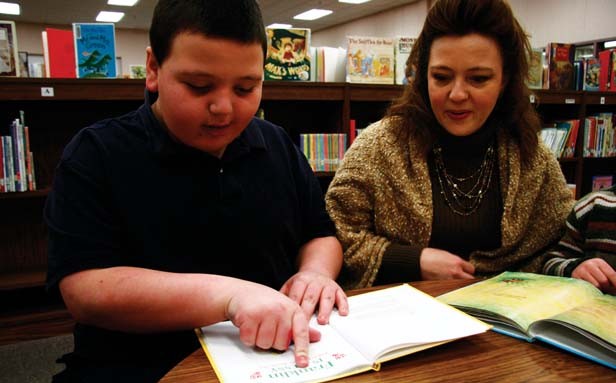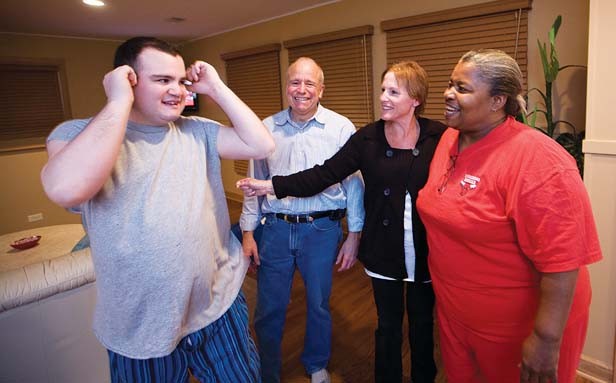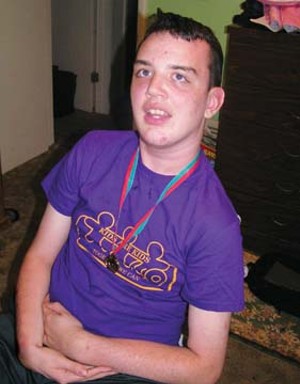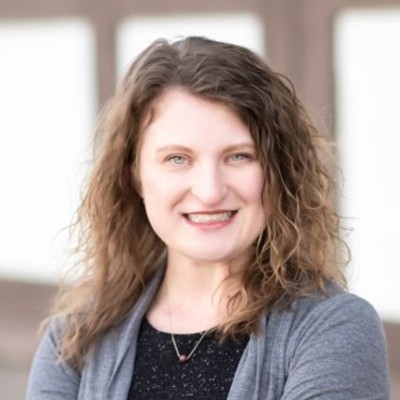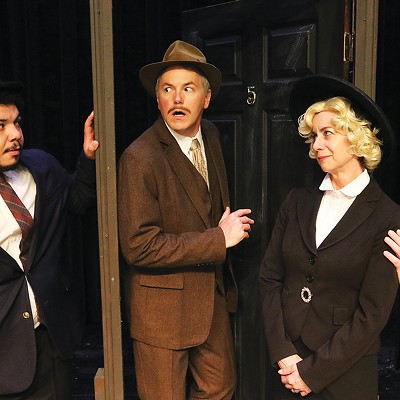When Teresa Paul’s son, Sean, was born, she dreamed of the day when he would graduate from college, get married and have children of his own. Like many new moms, she was excited to take her baby home, and she looked forward to watching Sean grow and reach developmental milestones, such as sitting up alone, walking and talking.
Nine months after Sean’s birth, Paul, a Taylorville resident, noticed that unlike most other babies his age, Sean was not babbling, nor could he sit up alone. And while most babies take their first steps around 12 months of age, Sean didn’t begin walking until just before his second birthday. Having heard that it is not uncommon for boys to reach developmental stages a little slower than girls, Paul figured that Sean was simply a “late bloomer” and that he would eventually catch up.
As Sean continued to lag behind his peers, Paul became increasingly concerned. At two years of age, he received an extensive medical evaluation and was diagnosed with Autism Spectrum Disorder (ASD), an umbrella term used to describe a wide range of neurological disorders affecting an individual’s communication, social interaction and behavior.
“It was devastating, a dying of dreams. Not only would my son not have the life that I’d dreamed, he would probably not have friends, and would always need daily care,” Paul stated.
Following the diagnosis, Paul immediately began educating herself and being an advocate for her son, seeking therapy to help improve his speech and occupational therapy to teach him daily grooming tasks.
Today, Sean Paul, who is 16 and is in his second year at Taylorville Community High School, still keeps to himself, often preferring to be alone rather than communicating with others. And, he is obsessed with certain movies and cartoons, which causes him to insert movie lines into regular conversation with others.
Sean is currently one of the estimated 1.5 million U.S. residents diagnosed with autism. And according to the national Autism Society, a Maryland-based grassroots organization focusing on improving the lives of individuals with the disorder through education, public awareness and advocating for services, the number is increasing daily.
In 2004, the Centers for Disease Control and Prevention (CDC) reported that one in every 166 children born in the U.S. was autistic. Today, the number has increased to one in every 110 births, with a new case diagnosed every 20 minutes.
Some maintain that the increase in autism diagnosis means that the disorder is more prevalent today. Others argue that the increase is due to more knowledge among medical providers, which has led to diagnosis of individuals who in the past were undiagnosed, and public awareness efforts from organizations such as Autism Speaks, and the Autism Society, which has more than 20 chapters in various states across the country, including Illinois.
Regardless of the reason for the increase, autism advocates are diligently working to meet the needs of the growing population.
Understanding autism
ASD is a complex group of disorders with a vast array of symptoms and behaviors occurring in various combinations and levels of severity, ranging from mild to disabling. Some may have fairly good verbal skills with very little delay in language, while others are nonverbal. Such variation makes the disorder unique from person to person.
Children with ASD often do not take part in pretend play, and have a hard time initiating social interactions. Many have “meltdowns,” commonly referred to as tantrums, which are usually caused by sensory stimuli, explained Julie Alderman, training center director of the Springfield regional office of The Autism Program (TAP) of Illinois, which networks with 30 agencies across the state to provide services for those with autism. TAP provides resources, programs, services and support to improve the quality of life for individuals with ASD. It impacts more than 16,000 families each year. In addition to offering services for those diagnosed, TAP also provides training and supports to health care providers and educators to assist Illinois families.
“About 95 percent of autistic children have sensory issues. They are simply overwhelmed by aspects of their environment,” she explained. The meltdowns, added Alderman, often cause families to isolate themselves to avoid being judged by others.
In addition to ASD, autistic children may also have other developmental disabilities, such as mental retardation, seizure disorders and Fragile X Syndrome. Depression, anxiety, attention deficits and sleep and gastrointestinal disorders are also fairly common.
Though autism is most often diagnosed in young children, it is sometimes identified in adulthood.
Living with autism
Springfield‘s Rebecca Moore recognized that her son, Jacob, had some developmental delays at an early age. By the time Jacob was four years old he didn‘t talk much, and had frequent meltdowns. “I knew in my gut that something was wrong, but I couldn’t quite put my finger on what the problem was,” said Moore.
Jacob’s pre-kindergarten teacher was the first to tell Moore that her son appeared to have some characteristics of autism, explaining that Jacob isolated himself, had difficulty following simple directions and would only use one particular color during coloring assignments. Several years and examinations passed before an extensive evaluation by a behavioral specialist revealed that Jacob is a high-functioning autistic.
Since his diagnosis, Jacob, who is now 11, has had speech and occupational therapy sessions at school several times each month for about five years. He also receives 30 hours of speech and 30 hours of occupational therapy paid by his father’s insurance. Jacob has also benefitted from therapeutic horseback riding and the United Cerebral Palsy summer day camp for autistic children and social skills classes at TAP.
Today, Jacob is in the sixth grade and is reading and writing at a first-grade level. Moore: “By the time Jacob gets through high school, if he is at a fifth or sixth grade level, which is the stage that public signs, menus, newspapers, and phonebooks are geared, then my husband and I will have done our job.”
State and local resources
According to the Centers for Diseases Control (CDC), in 2000, approximately 1,000 Illinois residents between the ages of 3 and 22 were diagnosed with autism. By 2008, the number had increased to more than 13,000. Today it’s estimated that more than 20,000 Illinois residents have been diagnosed with ASD.
In response to the increase of diagnosis, in 2003, Springfield’s Hope Institute for Children and Families led the development of The Autism Program, which also has regional centers in Chicago and Carbondale and affiliate centers in various locations across the state.
In 2004, Governor Rod Blagojevich signed a law creating the Illinois Autism Task Force, consisting of educators, medical professionals, and parents of children with the disorder. Its goal is to assess and address the needs of individuals with ASD. Since its formation, Illinois has passed a number of laws aimed at meeting the needs of those living with the disorder.
Insurance companies are now required to cover diagnosis and treatments of ASD. Though the state cannot afford to assist everyone in need, other laws provide home-based support services for children and adults with ASD and 24-hour residential support services in licensed group homes.
Illinois has also created the Illinois Autism Clearinghouse, which offers articles and resources for parents, teachers, and others interested in ASD.
Currently, many autism advocates are turning their attention to adults with autism. Children with autism and other disabilities are allowed to remain in school until the day before their 22nd birthday. But once they “age out” of school, many parents are left wondering what happens to their children, as there is little support available, says Julie Alderman of The Autism Program, adding that those with Asperger’s and other forms of high-functioning autism are most affected.
“This is a very fearful time for parents because often we don’t know what the next step is for our children,” said Moore. “Some have parents who work full time, yet the disorder is so severe that the child cannot stay home alone. There are cases where a parent has to quit a job in order to stay home to care for their child.”
Employment is a huge need,” Alderman continued. “These individuals can be productive in the work environment. Many of them have valuable skills and can be assets to various industries.” The issue,” explains Alderman, “is convincing employers that many with autism can make good employees. There is a learning curve. And they need to be allowed to make mistakes as they learn the job.” Alderman: “Earning their own money will increase their self-esteem.”
Another challenge for adults with autism involves housing. Many individuals with autism can live on their own with a little structure and support. This is especially important when you consider that parents won’t always physically be around to provide for their children. “I don’t won’t my younger son to feel as though he is responsible for his older brother once me and my husband are gone,” says Moore. “We want to know that our son will be okay.”
Three years ago, Moore’s employer, Lutheran Social Services, began plans to build a duplex to house eight high-functioning autistic adults. The home, modeled after the Richmond House in Richmond, Va., will cost $500,000 to $600,000, Moore said. The agency is currently seeking property in a residential neighborhood on which to build the home. Though the agency has raised enough funds to buy the property, officials are hoping that donors will contribute funds and in-kind services that will lower the project’s final cost.
Residents living in the home, which will include a staff person to provide assistance, will have to pay rent. The home will also have in-house life skills programs, which will include topics such as gaining employment, understanding a budget and managing money. Lutheran Social Services hopes to open the house within the year.
Recognizing the lack of support for adults with ASD, in September, two local counselors, Catherine Wells and Debi Edmund-Ellersten, began a monthly support group. To date, approximately a dozen adults, ages late teen to early 50s, have attended the meetings. Edmund-Ellersten says that discussions have included dealing with work challenges and the benefit of job coaching services, appropriate accommodations at work and school, myths and stereotypes that led to stigma and discrimination, and accessible community services.
“In a perfect world, everyone with autism would be diagnosed at an early age and begin treatment as soon as possible,” says Alderman. “And, not only would we be able to meet the needs of each individual with autism, we’d also provide counseling and therapy to empower and meet the needs of the entire family. “
In the meantime, Alderman and Moore both believe that the community can help make life easier for those with ASD by becoming more educated on the disorder and by being less judgmental towards those with the disorder. “I want people to recognize that when they see children having meltdowns in public, it doesn’t mean that he or she is a horrible child,” Moore says. “And, instead of glaring at us, asking if there is anything you can do to help would really go a long way in making us feel more comfortable in public.”
Contact Jolonda Young at [email protected].
To learn more about autism, contact TAP at 525-8332 or view their website www.theautismprogram.org.
For more information about the new adult support group, contact Edmund at 793-2587 or [email protected].
The categories of autism
There are several ASD categories – autistic (classic) disorders, Asperger’s syndrome; Rhett syndrome, pervasive development disorder (not otherwise specified) and childhood disintegrative disorder.
Classic autism – the most severe disorders on the spectrum – is characterized by impaired social interaction, difficulty communicating verbally or nonverbally, and unusual or severely limited activities or interests, which are often obsessive or repetitive. These characteristics manifest themselves in a variety of different behaviors, such as a lack of language and eye contact, extreme withdrawal and violent or repetitive behavior. Many participate in self-stimulatory behaviors, such as hand flapping, rocking and unusual noises. Those diagnosed with classic autism tend to be low functioning, which means that they are unable to care for themselves.
Asperger’s Syndrome is the mildest form of autism. The National Institute of Neurological Disorders and Strokes reports that two of every 10,000 children have Asperger’s, and that it occurs three times more often in boys than girls. Individuals with Asperger’s tend to have good language and cognitive skills, average or above average intelligence and are often gifted in areas such as art, drama and music.
Unlike those diagnosed with classic autism, who tend to isolate themselves, people with Asperger’s often want to connect with others but don’t know how. They generally lack the ability to read facial expressions and body language and tend to be clumsy and uncoordinated due to underdeveloped motor skills. Those with Asperger’s are considered high functioning, thus they need little assistance.
Rhett’s Syndrome is a rare autism disorder, occurring in one of every 10,000-15,000 live female births. While babies with the disorder initially develop normally, signs generally appear between six and eighteen months. The early signs of Rhett’s include a regression of previously learned skills, such as walking, crawling and sitting up, inappropriate infantile crying, teeth grinding, loss of muscle tone, delayed head and brain growth and severe dementia.
Like Rhett’s Syndrome, children with Childhood Disintegrative Disorder (CDD) initially begin developing appropriate verbal and nonverbal communication skills, social relationships and behaviors. However, they begin showing signs of regression in the areas of language, as well as social and motor skills, between the ages of two and ten, with average age of onset occurring between the ages of three and four. Other common signs of CDD are problems with bowel and bladder control, seizures, very low IQs, and the loss of language, which is much more severe than other disorders on the spectrum.
Individuals with specific behaviors – difficulties interacting socially and communicating with others that cannot be applied to other identifiable disorders on the spectrum are diagnosed with Pervasive Developmental Disorder (PDD).
Causes and treatment of autism
The exact cause of Autism Spectrum Disorder is unclear. When it was first diagnosed in the U.S. in the 1940s by Dr. Leonard Kennard, a researcher at Johns Hopkins University, the withdrawal symptoms led doctors to believe that it was caused by mothers who were cold, and detached from their children. In recent decades, doctors have renounced that theory.
Today, most scientists agree that genetics is a strong factor, as children with diagnosed siblings have a higher risk of being diagnosed. Studies also show that approximately 10 percent of children with ASD have genetic disorders, such Down’s and Fragile X Syndromes – a mental impairment causing cognitive and intellectual disabilities. Some scientists maintain that chemicals in pesticides may adversely affect those who are genetically predisposed to autism.
Some prescription drugs taken during pregnancy, specifically valproic acid, used for severe skin disorders and cancer, and thalidomide, prescribed for bipolar disorder and seizures, have also been linked to autism.
Diet, changes in digestive tracts and mercury poisoning have also been named as possible causes. While some believe that the measles-mumps-rubella vaccination causes autism, studies conducted by the Centers for Disease Control and other research institutions have found no conclusive evidence.
There are currently no medical tests to diagnose ASD. A typical diagnosis often involves a team of doctors, which can include a pediatrician, psychologist, behavioral therapist, speech and language pathologist, and occupational therapists. The doctors perform medical history interviews and behavioral questionnaires. Physical examinations are performed to check for a normal growth pattern. Hearing and lead poisoning tests are also routinely conducted.
Electroencephalograph (EEG) tests are also typically performed on children with signs of developmental regression, while magnetic resonance images (MRI) may be conducted if there are signs of differences in the brain structure. A chromosomal analysis may also be ordered.
Early treatment is vital in helping individuals improve their ability to function. Programs which work to improve communication, social interaction, behavior and learning are most successful in treating those with ASD.
While there is a wide variety of treatments and techniques available, the most common treatment methods include applied behavior analysis (ABA), which analyzes behaviors and uses rewards and positive reinforcements as a way to change behaviors; physical therapy to improve coordination and motor skills; and occupational therapy to teach individuals how to perform daily activities, such as feeding, bathing, grooming and dressing; and speech and language therapy to help with communication skills.
Medicines are also used to treat certain behaviors such as seizures, hyperactivity, anxiety and depression, while diets are used to deal with food sensitivities. Recreational and artistic therapies, including music, art and drama, and community support and parent training can also be beneficial.


